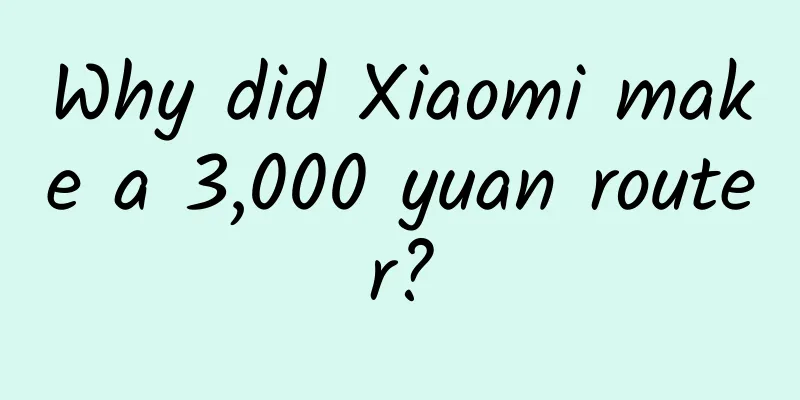A brief history of Zhihu 2: How to iterate products in a community with more than 60 million users

|
From products like WeChat and Zhihu, I feel that the most important thing in making products is rhythm. For product managers , making the right things happen one after another may be the most difficult thing. Socializing does not equal community. Tencent excels in social tools , such as QQ and WeChat. QQ Space is more like an independent space rather than a unified community. So when it comes to community product learning goals, I chose Zhihu, which has 60 million+ registered users and has raised D round of financing. I saw that the founder of Zhihu highly recommended a book called “The Death and Life of Great American Cities”, which talks about how to plan and build a vibrant city. I happened to have read this book, and I remember that the book said there are three key points for a city to be vibrant:
In fact, the community is very suitable for the metaphor of the city. Douban Community has previously tried a product form called Alpha City, but it ended in failure. This indirectly proves that building a virtual city is not easy and requires the coordination of various forces to make it start to grow. Research Methodology:
1. What are the needs of users of knowledge communities?
According to the frequency of all user needs (high -> low)
A friend of mine who is a big V with 10w+ fans often uses: ask questions, answer, follow, like, collect, private message, not helpful. 2. Three categories of product functions on Zhihu homepageCombined with the following screenshot of Zhihu's homepage, we can see the following three categories of product functions from Zhihu's homepage:
2.1 Zhihu’s product mechanism in guiding PGC
We can also see directly from the areas of different modules in the web page that the content distribution function occupies the largest area. Interestingly, the area of the content generation function is not the largest, but the location is the best, which is in the golden triangle area where users browse the web page. 2.2 Social (social behaviors, such as following and liking information reminders)We can see the priority differences in the Tab page here:
From the information priority ranking in this regard, we can see that Zhihu prioritizes content function, followed by social interaction. 1.3 Social (reputation system, such as personal homepage, professional information, education information, number of followers)3. In the past 7 years of Zhihu, what is the most important functional iteration every year?So the question is, for the PGC community product Zhihu, what was the most important product feature iteration every year from 2010 to 2017? I tried to use Python crawler on Tencent Cloud to crawl all the essential answers under the topic "Zhihu Product Improvement" and tried to answer this question with data. Of course, part of it is also my personal subjective judgment. From data analysis, we can see the time rhythm of several major version iterations of Zhihu (draw a timeline), as well as the degree of user attention (the number of likes for related iteration discussions)
Zhihu Manager + Column articles from the Zhihu product team An interesting phenomenon is that there are only 11 articles from Zhihu product team that have received over 1,000 likes, while there are 19 articles from Zhihu Butler that have received over 1,000 likes. It can be seen that the average Zhihu user is more concerned about community operations and atmosphere rather than product iteration. But I personally think that if there is no product-level protection for high-quality information and crackdown on low-quality information, but the operation team relies on the operation team, the manpower cost required to maintain a high-quality discussion atmosphere may be far beyond what a startup company like Zhihu can afford. 4. The algorithms behind Zhihu’s product featuresAs for Zhihu's product iteration, the early stage focused on information distribution and interaction, and algorithm-level functions began to appear in the middle stage. Users may not be able to see them but they are very important to the user experience. Content sideHow does Zhihu sort answers? https://www.zhihu.com/question/19576738 Wukong system - anti-spam, likes identification https://zhuanlan.zhihu.com/p/19998740 Zhihu + Sogou search function cooperation on the creation of Zhihu search box – Zhihu column User sideHow does Zhihu calculate the weight of a user in a certain field? https://www.zhihu.com/question/21544084 FriendlinessWhat lessons should Zhihu operators learn from Mr. Ge Jin’s withdrawal? https://www.zhihu.com/question/24843376 5. Those unknown niche functions of Zhihu - Programmer Easter EggsZhihu shortcut key: https://www.zhihu.com/question/19842222 In Chrome, press shift+ctrl+J Zhihu once had a group function, but the content was of poor quality, so it was quickly removed. summary:A very important part of Zhihu's core functions is about the Feeds flow. Its value lies in allowing users to see content that interests them while also allowing them to see some of the most popular content on the platform. At the product level, it can be considered that Zhihu's content distribution is mainly based on social relationships, and the Feeds in the "Discover" function are based on algorithms and editor recommendations. Through a series of product functions, Zhihu has established a complete relationship chain between people-problems, problems-people, people-people, and problems-problems. In my opinion, this is also an important reason why Zhihu can become a content city.
There was a very popular question on Zhihu one year ago:
An answer with more than 10,000 likes mentioned a sentence:
In fact, in addition to enjoying such witty answers, more and more users are now flocking to Zhihu, a Chinese question-and-answer platform. In my opinion, the most important reason is just one sentence: Zhihu has a huge amount of high-quality content in different fields, and has a high-quality organizational structure, which makes it easy to find. The subsequent Zhihu History 3 will consider analyzing from the perspectives of community operations ( attracting new users + promoting activation + atmosphere building + why some big Vs quit Zhihu, etc.). Mobile application product promotion service: APP promotion service Qinggua Media advertising The author of this article @贺嘉 is compiled and published by (Qinggua Media). Please indicate the author information and source when reprinting! Site Map |
Recommend
Animal experiments: the heroes behind human anti-epidemic efforts丨Things about microorganisms
Editor's note: Microorganisms are both our fr...
The latest situation of Shaoyang epidemic in 2022: Is Shuangqing District under lockdown? Attached with the latest notice
Recently, the local epidemic situation in Hunan&#...
7 key words! Interpreting the hot new trends in digital marketing in 2019
With the changes in the digital environment, mult...
194 confirmed cases in 6 days, why is it Manzhouli? How much pressure do we have from overseas imports?
According to the sixth press conference held by t...
On the day of Hong Kong's return, let's take a look at Hong Kong's district flowers
In a blink of an eye, half of 2022 has passed. Tu...
As flu season approaches, how should we get vaccinated?
Produced by: Science Popularization China Author:...
How to attract traffic and promote on Weibo? You have to learn this trick!
There are many ways to attract traffic on Weibo, ...
King Zhou, what is the charm of foxes?
fox A frequent guest in legends Often plays charm...
National Nutrition Week | These good dietary habits will help you eat healthily
May 15th to 21st is National Nutrition Week. How ...
How do growth hackers perform operational data analysis?
Attracting new users , promoting activation, and ...
MIUI6 has caused controversy. Where will the customized system go in the future?
MIUI, the "best third-party customized Andro...
The sales of NIO, Xiaopeng and Li Auto have skyrocketed, but Tesla still outsells ten of its competitors by itself. How long will it take for domestic brands to take the center stage?
As April began, new car-making forces represented...
Led by a Chinese scientific team, the world's only "brain map" is published in the world's top magazine
What cells does the brain consist of? What is the...
Is it okay to eat more shrimps if you are allergic to them? Don't be silly, many people have been admitted to the ICU because of this
"If you are allergic to a certain food, just...









